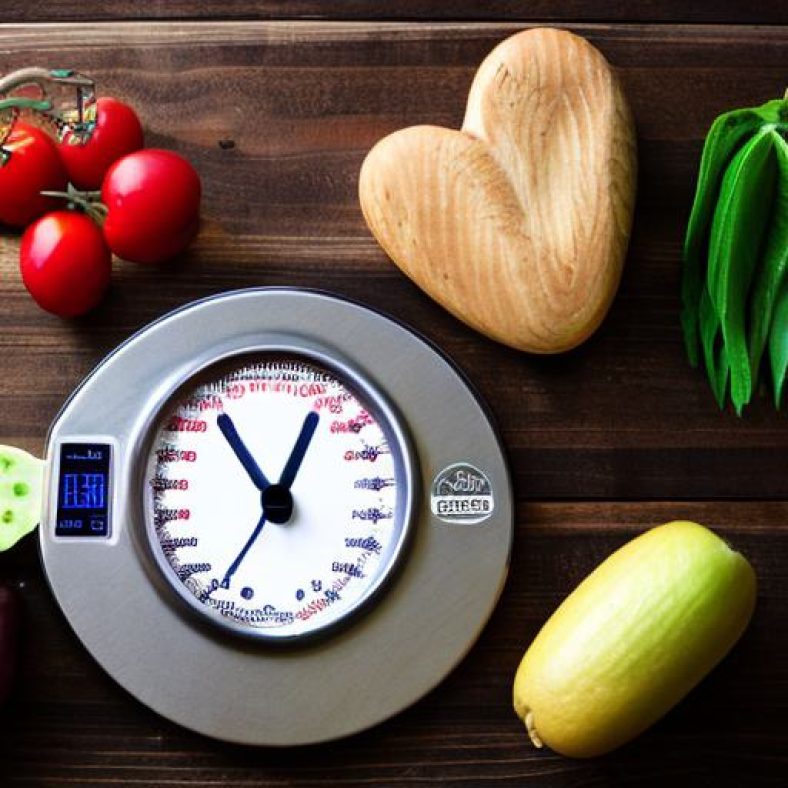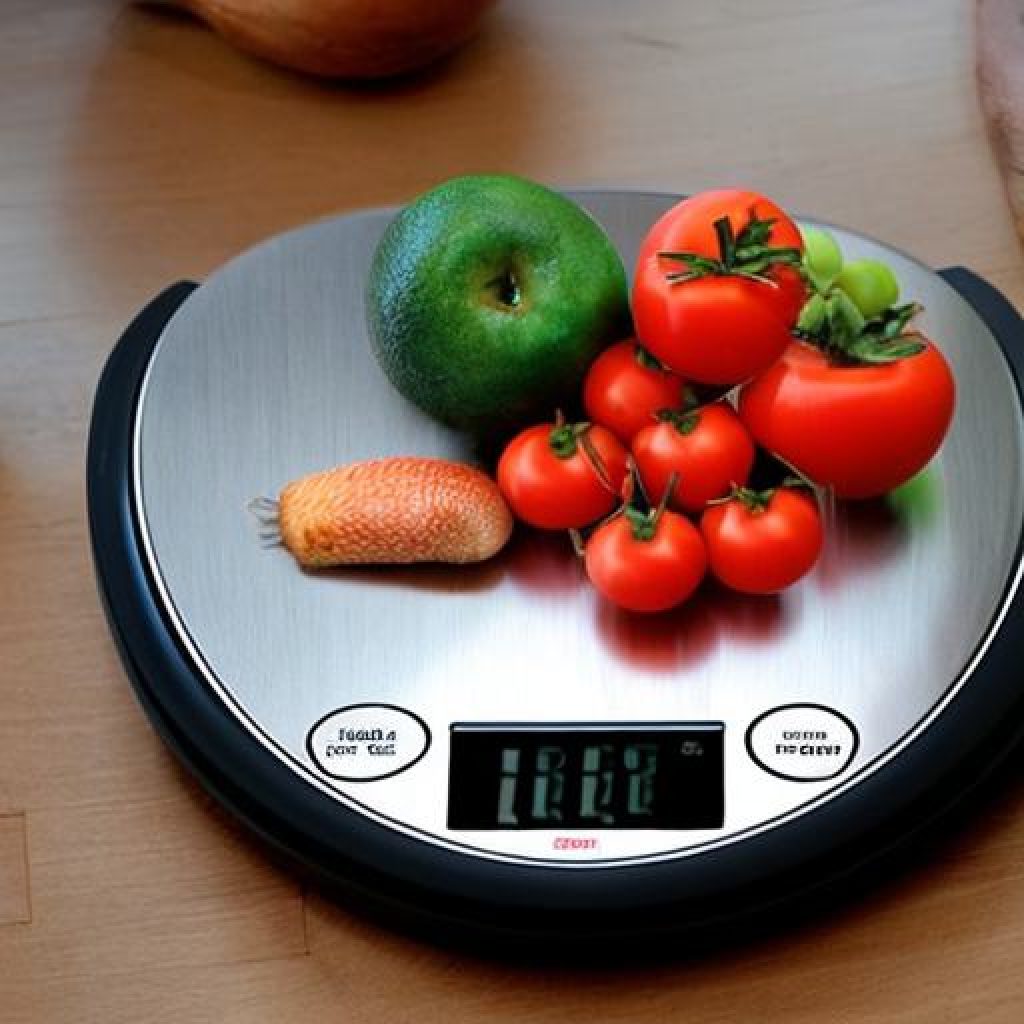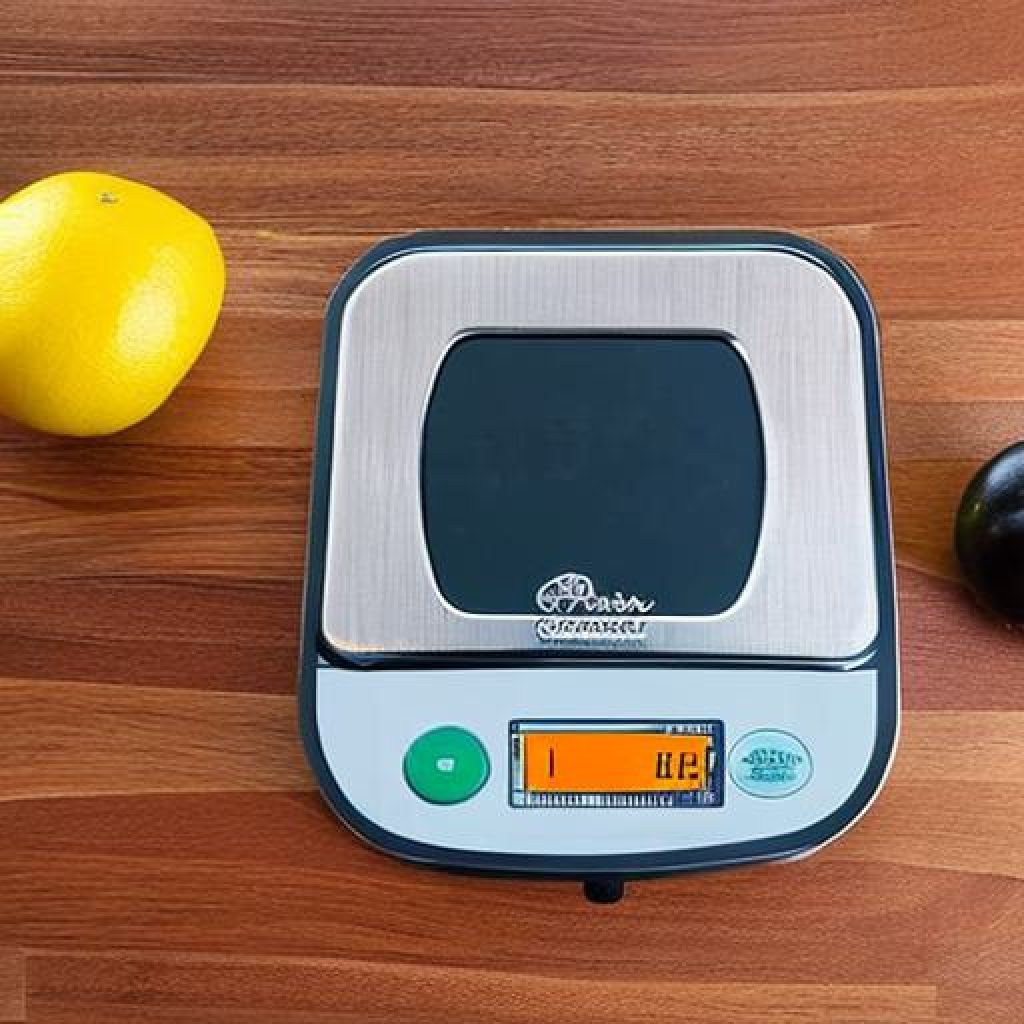Your cart is currently empty!
How to Use Your Kitchen Scale for Portion Control and Healthy Eating

Disclaimer
As an affiliate, we may earn a commission from qualifying purchases. We get commissions for purchases made through links on this website from Amazon and other third parties.
In today’s fast-paced world, it’s easy to overlook the importance of portion control and healthy eating. Many of us are always on the go and choose to eat whatever is convenient, without considering the long-term effects of our dietary choices.
However, maintaining a healthy weight and reducing the risk of chronic diseases such as heart disease, diabetes, and cancer require paying attention to portion sizes and making healthy food choices.
One of the most effective ways to control portion sizes and ensure a healthy diet is by using a kitchen scale. In this article, we’ll explore the benefits of using a kitchen scale for portion control and healthy eating and provide tips for choosing and using a kitchen scale effectively.
Benefits of Using a Kitchen Scale for Portion Control
Using a kitchen scale for portion control provides several benefits, including:
- Accurate Measurements: A kitchen scale provides accurate measurements of food portions, ensuring you consume the appropriate amount of calories and nutrients.
- Consistency: Consistently measuring food portions with a kitchen scale helps develop a better understanding of portion sizes, making it easier to eyeball portion sizes in the future.
- Portability: Most kitchen scales are portable and can be taken anywhere, making them an excellent tool for those who travel frequently or eat out often.
- Versatility: A kitchen scale can be used to measure a wide range of foods, including fruits, vegetables, grains, meats, and more.
How to Choose the Right Kitchen Scale for Your Needs
When choosing a kitchen scale, there are several factors to consider, including:
- Capacity: Consider the amount of food you’ll be weighing at once and choose a scale with the appropriate capacity.
- Accuracy: Look for a kitchen scale that provides accurate measurements, preferably to the nearest gram or ounce.
- Units of Measurement: Choose a kitchen scale that provides measurements in units that you’re familiar with, such as grams, ounces, or pounds.
- Ease of Use: Look for a kitchen scale with a user-friendly interface and easy-to-read display.
- Additional Features: Some kitchen scales come with additional features such as a timer, tare function, or automatic shut-off. Consider which features are most important to you.

How to Use a Kitchen Scale for Portion Control and Healthy Eating
Using a kitchen scale for portion control and healthy eating is simple and straightforward. Follow these steps:
- Set up the kitchen scale on a flat, stable surface.
- Turn on the kitchen scale and ensure that it’s set to the appropriate unit of measurement.
- Place the food item you want to measure on the scale.
- Read the weight displayed on the scale and record it if necessary.
- Repeat the process for other food items.
- Use the recorded weights to determine the appropriate portion sizes.
- Enjoy your accurately portioned meal!
- Tips and Tricks for Effective Portion Control with a Kitchen Scale
Plan Ahead: Planning meals in advance and weighing out the necessary ingredients ahead of time can make portion control much easier. By planning your meals in advance, you can ensure that you have the right ingredients on hand and that you’re not tempted to overeat or snack on unhealthy foods. Weighing out your ingredients ahead of time can also help you stay on track with portion control, as you’ll know exactly how much you’re eating. This can be especially helpful for calorie-dense foods like nuts, seeds, and oils, which can quickly add up if you’re not careful. By planning ahead and weighing your ingredients, you can take control of your diet and make healthy eating a habit.
2. Choose the Right Scale
When it comes to portion control, not all kitchen scales are created equal. It’s important to choose a scale that is accurate, reliable, and easy to use. Digital kitchen scales are generally the most precise option, and many models come with useful features like tare functionality, which allows you to weigh multiple ingredients without having to empty the bowl or container each time. Look for a scale with a large enough platform to hold your food, and consider a model with a backlit display if you’ll be using it in low-light conditions. If you’re looking for a more eco-friendly option, consider a mechanical kitchen scale, which doesn’t require batteries and can be a great option for those who want to reduce their environmental footprint. Whatever type of scale you choose, make sure it meets your needs and is easy to use on a regular basis.
- Start with Small Goals
When starting with portion control, it’s crucial to set small and achievable goals. If you try to make significant changes all at once, you may feel overwhelmed and give up. Instead, start by making small changes to your diet and gradually work your way up to bigger goals.
For instance, you can begin by measuring your portions for one meal per day and gradually increase it to two or three meals. You can also start by reducing your portion sizes by 10% and gradually work your way up to 20% or more.
- Keep a Food Diary
Keeping a food diary can help you track what you eat, how much you eat, and when you eat. This information can help you identify patterns in your eating habits and make changes to your diet accordingly.

You can use a paper diary, a smartphone app, or a website to record your food intake. Make sure to write down everything you eat and drink, including snacks, condiments, and beverages. You can also record your hunger level before and after each meal and note any emotional triggers that may have influenced your food choices.
- Make Healthy Swaps
Another way to practice portion control is to make healthy swaps in your diet. For instance, you can substitute high-calorie foods for lower-calorie alternatives that are just as satisfying.
Here are some examples of healthy swaps you can make:
- Swap white rice for brown rice or quinoa.
- Swap sugary drinks for water, herbal tea, or flavored sparkling water.
- Swap potato chips for air-popped popcorn or sliced veggies with hummus.
- Swap ice cream for frozen yogurt or a small serving of fresh fruit.
- Use Visual Cues
Visual cues can be a helpful tool for portion control. For example, you can use your hand or a common household item to estimate portion sizes.
Here are some examples of visual cues you can use:
- One serving of meat or fish is about the size of a deck of cards or the palm of your hand.
- One serving of cheese is about the size of four dice.
- One serving of pasta or rice is about the size of a tennis ball or your clenched fist.
- One serving of nuts or seeds is about the size of a golf ball or the palm of your hand.
- Be Mindful While Eating
Practicing mindfulness while eating can help you become more aware of your food choices, portion sizes, and hunger cues. When you eat mindfully, you pay attention to the taste, texture, and smell of your food and savor each bite.
Here are some tips for practicing mindful eating:
- Take small bites and chew slowly.
- Put down your utensils between bites.
- Focus on the present moment and avoid distractions like TV or your phone.
- Listen to your body’s hunger and fullness cues.

Conclusion
Using a kitchen scale can be a helpful tool for portion control and healthy eating. By measuring your food and tracking your intake, you can become more aware of your eating habits and make changes to your diet accordingly.
However, it’s important to remember that portion control is just one aspect of a healthy diet. You should also aim to eat a variety of nutritious foods, stay hydrated, and engage in regular physical activity to maintain your overall health and wellbeing.
We hope this article has provided you with useful tips and strategies for using your kitchen scale for portion control and healthy eating. By following these guidelines, you can make positive changes to your diet and improve your overall health.

